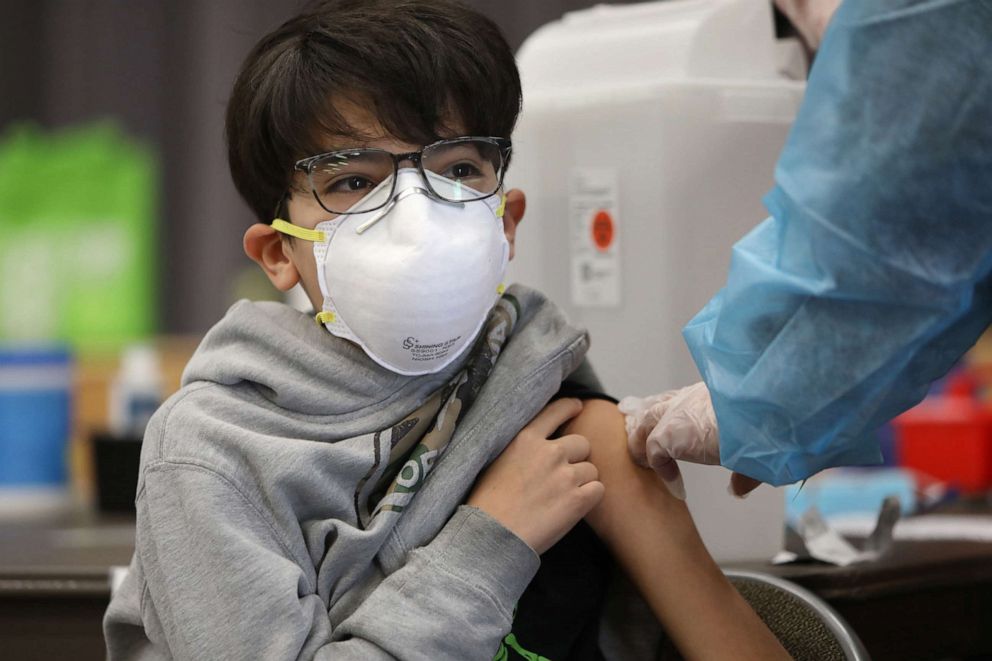When calculating vaccine statistics, growing evidence suggests we shouldn’t only count adults – children are part of the population, too, and Covid is now impacting them more than ever before.
Any notion that “Covid-19 just doesn’t affect children” should be swiftly set aside. Though the early months of the pandemic generally saw infection rates strongly concentrated in the older age groups, with young children usually spared, that is no longer the case.
Now, even though most children still display as-yet unexplained resilience to the disease’s worst effects, Covid’s Delta variant is nevertheless sending more kids to the hospital now than at any point in the pandemic.

According to troubling new data from the United States – which like many countries is once again battling a stubborn surge of Covid cases, this time courtesy of the stronger, fitter, and more transmissible Delta variant – children accounted for 15% of all new cases in the week leading up to August 5. From July 29 to Aug. 5, there were 93,824 child Covid-19 cases reported in the country, making up about 15% of the weekly reported cases, according to an analysis published by the American Academy of Pediatrics. Reports of more and more kids being admitted to hospital wards have cropped up, particularly in the southern states of the US, where vaccination rates are relatively low.
In the state of Arkansas, reporter Katherine Wu wrote in an in-depth article for The Atlantic, “In recent weeks, Arkansas Children’s Hospital — the only paediatric hospital system in Arkansas, where vaccine uptake has been especially sluggish — has admitted far more children than at any other point in the pandemic.”
Meanwhile, Jessica Snowden, Arkansas Children’s chief of paediatric infectious disease, told Wu that she’s now seeing roughly three times as many children at a time in her hospital, and all of them are unvaccinated.
“Many of Arkansas Children’s new Covid-19 patients are also much more ill than before,” said the article. “They’re coming in with wrecked lungs, struggling to breathe; they’re not bouncing back with typical youthful resilience, despite having been very healthy before… It’s become common for more than half of the kids in the ICU to be on ventilators. A few have been in the hospital for more than a month.”
“This Covid surge, I’ve never seen anything like it,” Linda Young, a respiratory therapist who’s been on the job for 37 years, told Wu. “It’s the sickest I’ve ever seen children.”
However, in the UK, although the surge in cases driven by the Delta variant increased the raw numbers of paediatric cases, the increase of the proportion of those cases against the total was not as significant. In both countries, it remains unclear as of yet whether Delta is making kids who contract the virus significantly sicker or not.

THE GOALPOSTS HAVE SHIFTED
Too many statistics, perhaps in a bid to make the rates of vaccination seem higher, report the vaccination rate among adults only: “As of today, 36% of Malaysia’s adult population has been fully vaccinated” a recent report reads.
Unfortunately, this approach is flawed, as in this case 36% of the adult population equates to only about 26% of the total, actual population. And the total population is the number that counts, because if you think Covid-19 somehow wouldn’t spread in a cinema or a stadium packed with hundreds of 16- and 17-year-olds, health experts and virologists beg to differ.
Though it’s certainly fair to note that the vaccines are not yet approved for under-18s in many countries (including Malaysia), and aren’t approved for under-12s in any country, the fact remains that if you’re striving to hit a certain percentage of vaccinations in a population, you cannot simply discount the residents who are under 18. In a pandemic, they still count. They always have. The difference now is that the Delta variant is targeting them more aggressively.
So, two things need to happen: First, we need to stop pretending that kids aren’t part of the pandemic and that they can somehow be excluded from the population when calculating vaccination rates. And second, Malaysia’s Ministry of Health needs to consider accelerating their study on vaccinating minors, as they are reportedly already exploring this option. (Under-18s who registered with MySejahtera were accepted into the system for future possible use, but have not currently been given appointments.)
The UK’s Joint Committee on Vaccination and Immunisation already officially recommends that the vaccines be offered to all 16- and 17-year-olds, and numerous other European countries and the United States are supplying vaccines to minors, too. Some countries in the Middle East have also begun vaccinating under-18s, and other countries, including China, Malta, Chile, and Indonesia are among those who have included minors in their vaccination efforts.

The US CDC currently recommends Covid-19 vaccination for all over-12s. Statistics show that about 40% of all 12- to 17-year-olds in the US have received at least one vaccine dose. Studies are currently ongoing for vaccine use in children aged 5 to 11, and the data will be submitted for review and approval beginning in September.
Then, it will be up to the FDA, whose broader, full approval for Covid-19 vaccines (for over-12s) is expected in the coming weeks, beginning with Pfizer’s vaccine.
UPDATE: Malaysia’s Ministry of Health announced on August 13 that adolescents 12 to 17 years of age would be included for vaccinations beginning in mid-September, subject to vaccine supplies.
You can read the CDC’s recommendations for vaccinating children and teenagers HERE.
A science-based article which makes the case both for and against countries immunising adolescents, particularly if it’s at the expense of vaccinating higher-risk groups, can be found HERE.
"ExpatGo welcomes and encourages comments, input, and divergent opinions. However, we kindly request that you use suitable language in your comments, and refrain from any sort of personal attack, hate speech, or disparaging rhetoric. Comments not in line with this are subject to removal from the site. "

















